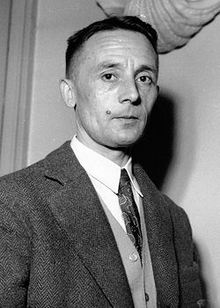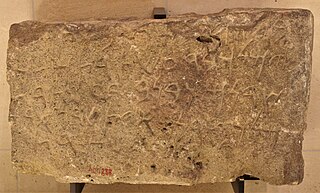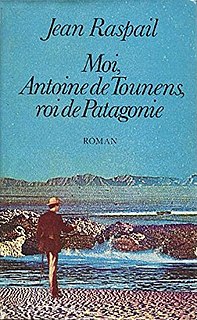
The King's Daughters is a term used to refer to the approximately 800 young French women who immigrated to New France between 1663 and 1673 as part of a program sponsored by King Louis XIV. The program was designed to boost New France's population both by encouraging male colonizers to settle there, and by promoting marriage, family formation and the birth of children. While women and girls certainly immigrated to New France both before and after this time period, they were not considered to be filles du roi, as the term refers to women and girls who were actively recruited by the government and whose travel to the colony was paid for by the king. They were also occasionally known as the King's Wards.

Michel Tournier was a French writer. He won awards such as the Grand Prix du roman de l'Académie française in 1967 for Friday, or, The Other Island and the Prix Goncourt for The Erl-King in 1970. His inspirations included traditional German culture, Catholicism and the philosophies of Gaston Bachelard. He resided in Choisel and was a member of the Académie Goncourt. His autobiography has been translated and published as The Wind Spirit. He was on occasion in contention for the Nobel Prize in Literature.

Hassan II was the King of Morocco from 1961 until his death in 1999.

The Château de Marly was a French royal residence located in what is now Marly-le-Roi, the commune on the northern edge of the royal park. This was situated west of the palace and garden complex at Versailles. Marly-le-Roi is the town that developed to serve the château, which was demolished in 1806 after passing into private ownership and being used as a factory. The town is now a bedroom community for Paris.

Paul Loup Karl Sulitzer is a French financier and author. Before he turned seventeen, he was already a self-made millionaire. Sulitzer used his financial experience and knowledge in his books, which often related to the business world.

Julien Gracq was a French writer. He wrote novels, critiques, a play, and poetry. His literary works were noted for their dreamlike abstraction, elegant style and refined vocabulary. He was close to the surrealist movement, in particular its leader André Breton.
Thierno Saïdou Diallo, usually known as Tierno Monénembo, is a Francophone Guinean novelist and biochemist. Born in Guinea, he later lived in Senegal, Algeria, Morocco, and finally France since 1973. He has written eight books in all and was awarded the 2008 prix Renaudot for The King of Kahel.
Camara Laye was a writer from Guinea. He was the author of The African Child, a novel based loosely on his own childhood, and The Radiance of the King. Both novels are among the earliest major works in Francophone African literature. Camara Laye later worked for the government of newly independent Guinea, but went into voluntary exile over political issues.

Le Pecq is a commune in the Yvelines department in the Île-de-France region in north-central France. It is located in the western suburbs of Paris, 18.4 km (11.4 mi) from the center of Paris.
Jean de Maillard is a French magistrate in Blois.

Le Mesnil-le-Roi is a commune in the Yvelines department in the Île-de-France region in north-central France. It is about 8 km (5 mi) from Saint-Germain-en-Laye.

Pierre Michon is a French writer. His first novel, Small lives (1984), is widely regarded as a genuine masterpiece in contemporary French literature. He has won several prizes for Small lives and for The Origin of the World (1996) as well as for his body of work. His novels and stories have been translated into German, Dutch, Italian, Spanish, Greek, Portuguese, Polish, Serbian, Czech, Norwegian, Estonian and English. He won the 2017 International Nonino Prize in Italy.
With an oeuvre consisting of a stunning confessional novel—Vies minuscules (1984)—and a series of Plutarch-like "lives" devoted to famous artists and poets, Michon commands respect as a sensitive author and gifted stylist who seeks to comprehend how we can make sense out of the irrepressible impulses and unavoidable failures that fill our lives. Whether he is charting the misfortunes of the lowly, portraying his own difficult rise from rural poverty and a broken family to the completion of his first book, or plunging into the destinies of Watteau, Goya, Rimbaud, or Van Gogh, Michon poignantly captures the essence of the compelling courses our lives take.
Zhu Shenghao was a Chinese translator. Born in Jiaxing, Zhejiang of China, he was among the first few in China who translated the works of William Shakespeare's into Chinese language. His translations are well respected by domestic and overseas scholars.

The Afrasiab murals, also called the Paintings of the Ambassadors, is a rare example of Sogdian art. It was discovered in 1965 when the local authorities decided to construct a road in the middle of Afrāsiāb mound, the old site of pre-Mongol Samarkand. It is now preserved in a special museum on the Afrāsiāb mound.
Octave Aubry was a French novelist and historian.
Robert Poulet was a Belgian writer, literary critic and journalist. Politically he was a Maurras-inspired integral nationalist who became associated with a collaborationist newspaper during the occupation of Belgium by Nazi Germany.

Bodashtart was a Phoenician ruler, who reigned as King of Sidon, the grandson of King Eshmunazar I, and a vassal of the Achaemenid Empire. He succeeded his cousin Eshmunazar II to the throne of Sidon, and scholars believe that he was succeeded by his son and proclaimed heir Yatonmilk.

Moi, Antoine de Tounens, roi de Patagonie is a 1981 novel by the French writer Jean Raspail. It tells the story of the French adventurer Orélie-Antoine de Tounens, who in 1860 declared the independence of the Kingdom of Araucanía and Patagonia, located in South America, where he held the title of king for the next 18 years. The sovereignty of the country was not respected by Chile and Argentina, whose authorities regarded Tounens as insane. The title of the book means "I, Antoine de Tounens, King of Patagonia".

Madeleine-Angélique de Gomez was a French author and playwright.

The Emergence of African Fiction is a 1972 academic monograph by American scholar Charles R. Larson. It was published initially by Indiana University Press, and again, in a slightly revised edition, in 1978 by Macmillan. Larson's study has elicited very different responses: it was praised as an early and important book in the study and appreciation of African literature in the West, but for others it remained stuck in a Eurocentric, even colonizing mode in which Western aesthetics were still the unspoken standard for artistic assessment.














